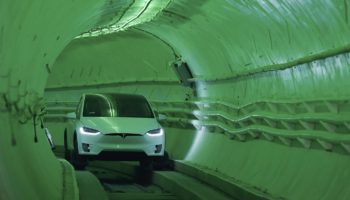Tag: tunnels
Getting into Melbourne from the north
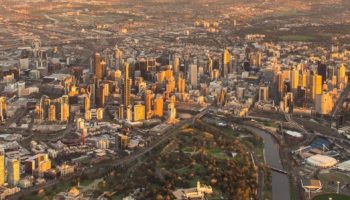
Melbourne’s CBD isn’t quite as hard to access as Sydney’s, but it’s still no walk in the park. The Macedon Ranges on the west and the Kinglake Ranges on the east restrict northern access to a single corridor; all plausible alignments pass roughly through Heathcote Junction. We look at the four most promising corridor options.
Liverpool
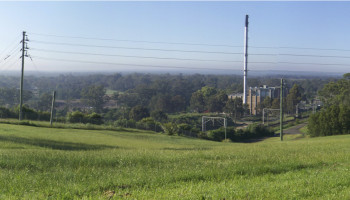
In our look at the possible corridors we could use to access inner Sydney, we identified two possible contenders that could get us to within about 15km of Central Station before we had to go underground. The first was to use the East Hills corridor until Revesby or soon after, and subsequently using a long tunnel (15-17km) to Central. The other main option was to use the Cumberland and Inner West corridors via Liverpool and Cabramatta…
Bowral / Mittagong
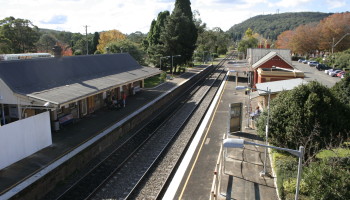
The geography between Moss Vale and Mittagong presents a significant barrier to infrastructure development, both due to the built up areas of Bowral and Mittagong and also the imposing topography of Mt Gibraltar. For this reason, re-use of the existing corridor is the best and probably only option here.
Moss Vale
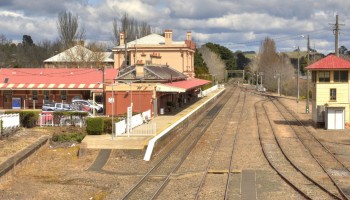
Now we are really getting into the heart of the Southern Highlands, with its beautiful rolling pastures, cute hamlets, manicured golf courses, and of course the Shoalhaven Escarpment on the southeastern side. The existing railway between Bundanoon and Moss Vale is pretty windy, so we will need to build a completely new track through moderately difficult terrain.
Towrang to Marulan
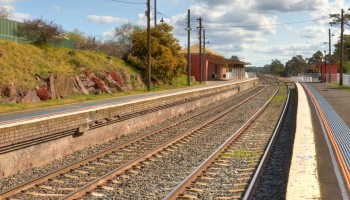
This sector involves some difficult terrain, with the Wollondilly River winding between hilly country. The eastern part of the alignment approaching Marulan is unproblematic; curves are minimal and there is even a former trackbed on the north side of the tracks that can be reutilised for most of the length.
A critique of the 2013 HSR study

The 2013 Phase 2 report into high-speed rail by AECOM took two years and 20 million dollars to complete, and it is a remarkable piece of work, comprising detailed alignment routes, costings, economic analysis and much more. It is easily the most comprehensive HSR study undertaken in this country to date. It’s a …
Getting into Melbourne from the north

Melbourne’s CBD isn’t quite as hard to access as Sydney’s, but it’s still no walk in the park. The Macedon Ranges on the west and the Kinglake Ranges on the east restrict northern access to a single corridor; all plausible alignments pass roughly through Heathcote Junction. We look at the four most promising corridor options.
Liverpool

In our look at the possible corridors we could use to access inner Sydney, we identified two possible contenders that could get us to within about 15km of Central Station before we had to go underground. The first was to use the East Hills corridor until Revesby or soon after, and subsequently using a long tunnel (15-17km) to Central. The other main option was to use the Cumberland and Inner West corridors via Liverpool and Cabramatta…
Bowral / Mittagong

The geography between Moss Vale and Mittagong presents a significant barrier to infrastructure development, both due to the built up areas of Bowral and Mittagong and also the imposing topography of Mt Gibraltar. For this reason, re-use of the existing corridor is the best and probably only option here.
Moss Vale

Now we are really getting into the heart of the Southern Highlands, with its beautiful rolling pastures, cute hamlets, manicured golf courses, and of course the Shoalhaven Escarpment on the southeastern side. The existing railway between Bundanoon and Moss Vale is pretty windy, so we will need to build a completely new track through moderately difficult terrain.
Towrang to Marulan

This sector involves some difficult terrain, with the Wollondilly River winding between hilly country. The eastern part of the alignment approaching Marulan is unproblematic; curves are minimal and there is even a former trackbed on the north side of the tracks that can be reutilised for most of the length.
A critique of the 2013 HSR study

The 2013 Phase 2 report into high-speed rail by AECOM took two years and 20 million dollars to complete, and it is a remarkable piece of work, comprising detailed alignment routes, costings, economic analysis and much more. It is easily the most comprehensive HSR study undertaken in this country to date. It’s a …




